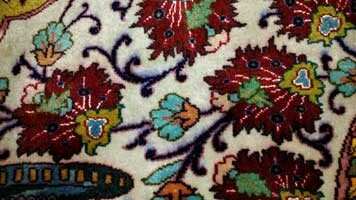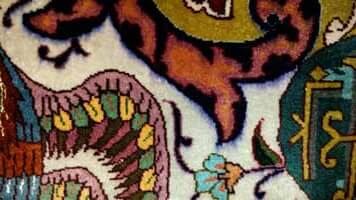Overview of carpet dyeing
Color run, or dye "bleed" as it is sometimes called, can occur for many reasons. Typically the migration of unstable synthetic dyes, color run can also be a result of natural dyes poorly applied, aggressive washing, or pigments applied after weaving. Color run can generally be removed, but there are factors that make the process challenging.
Procedures for removing rug & carpet color run are generally proprietary, often shrouded in mystery and folklore by the trade. They are fairly simple processes, that use reducing agents or oxidizers. These procedures can be effective but success depends substantially on the experience and skill of the person doing the work.
The process employing a reducing agent, commonly sodium hydrosulphite, is referred to as "stripping". It is useful for removing synthetic dye run, acid dye "paint jobs" used to alter color, and staining from synthetic dye sources (artificially colored foods and drinks, medicine, etc.) The process does not damage fiber and can often remove color run or staining without substantially altering rug & carpet original color.
A second category of processes employs an oxidizer, typically sodium hypochlorite or related compounds. These are also referred to as bleach wash, luster wash and antique wash. At low strength they can remove stains and certain types of color run. They can also be sued tp create artificial luster in wool, soften color, and alter the "hand" of the fabric.

